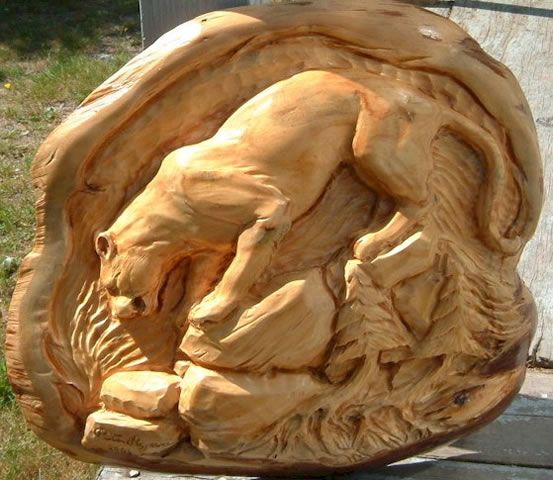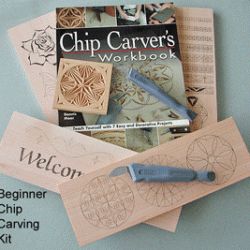
Many artists are discovering the beauty of chainsaw wood carving. The art is a natural extension and extension of their skill sets. It often involves a combination or modern and traditional carving techniques. Since the 1960s, Crager and Tracie Dugas have been carving beautiful wood pieces. Between shows, they like to go home and help with staining. His daughters also help with some of his staining and painting projects. White pine is preferred by them as it is lighter and less susceptible to cracking.
Rich Anderson
Rich Anderson is a chainsaw wood carve artist from Reedsport, Oregon. Anderson, a Poughkeepsie-native, lives with his family. Anderson holds several degrees in the fine arts and teaches art to children in the Pre-K to fifth grades. Anderson has carved many sculptures throughout Long Island. His works include sculptures made from corn ear and standing trees. He is currently working to create a sign for Youngs Farm, Riverhead.
A $400 chainsaw allows him to create beautiful sculptures that would take days to chisel out of a tree. Chainsaw wood carving can also be used to create beautiful sculptures that are more environmentally friendly than hammers and chisels. Anderson advertises his business through word of mouth and has carved a giant cobra and a great blue heron for a mechanic in Wading River.
Tracie Dugas
Tracie dugas's life-size wood carving of a wizard is an excellent example of her ability as a woodcarver using a chainsaw. The young woman, 49, lives in Clare, Nova Scotia, between Digby and Yarmouth. The chainsaw woodcarver was among several artists who displayed their works during the Canada Day weekend, Sydney, Nova Scotia. Although tourists flooded Sydney's waterfront, the dry spell allowed locals to take in the view of the chainsaw artist and enjoy the waterway.
Tim Crager
Although Tim Crager wasn't an artist, and was only slightly skilled with a chainsaw at the time, his passion for carving became a full-time job six years ago. Crager has sold more than $1,000,000 worth of carvings across the Eastern U.S. since then. Crager was born in Garrett, Eastern Kentucky. He grew up watching the chainsaw wood carver at his work. The artist's style captivated him, so one day he called his boss and put in his two-week notice.

Crager prefers white Pine because it's easy to find from tree trimming firms. Some people prefer other woods. Crager follows the grain of the wood and lets the saw guide his creations. Although Crager is usually clear about what he intends to do before he starts a project, he can change his mind at any time. For small projects, it takes less than an hour. Large carvings can take 33 to 35hrs.
Don Scoggins
Don Scoggins, a chainsaw wood carver, is his name. His wood carvings include detailed animals and often include multiple animals. His creations have attracted attention from tourists and neighbors alike. Blue Arrow Farm's entry and coffee shop is adorned by chainsaw sculptures so detailed and large that they can be seen from all angles. Blue Arrow Farm is owned and managed by Don Oriolo. Kacie Oriolo, Don Oriolo’s husband, met while participating in a New Jersey State Fair competition for chainsaws.
The award-winning wood carver began carving in a contest in Reedsport, Oregon 15 years ago. He was already proficient at hand carving, but he hadn't ever used a machine like a chainsaw. His latest carvings feature an otter with a mother beaver and a squirrel peering out of the tree. Now he is preparing for the National Chainsaw Carving Competition.
Dan Porter

Dan Porter is a chainsaw wood carver and has been highly sought after for many years. His intricate and beautiful carvings are well-known around the world. But before he became famous, he spent years carving for the timber industry and met other like-minded people. Here are some of the things that made him a world-class wood carver:
FAQ
Do I need to be a genius to succeed in woodworking?
No. It is not rocket science to woodwork. Anyone can learn how to use basic power tools and techniques to create beautiful works of art.
How often should I purchase new supplies?
You'll probably have to replace some of your tools over time. If you're using hand tools, you'll need to sharpen them regularly. If you are using power tools, you will need to purchase replacement parts regularly. Avoid buying too many products at once. Spread your purchases out over several months.
How long does it take to finish a piece of furniture?
It all depends on what type of wood you use, how complex your design is, and how much finishing you use. Hardwoods, on the other hand, are more durable than softwoods. Hardwoods tend to be more expensive that softwoods. But they last longer, and resist moisture better. Finishing furniture can take anywhere from one week up to three months.
How can a beginner woodworker make money?
Many people are starting to learn how to build furniture because they want to start an online business. If you are just starting to build furniture, there are many other ways to make money than selling on Etsy. You could sell at craft fairs or local events. For those who want to build their own furniture, you might offer workshops. Consider offering your services if you have previous experience as a builder or carpenter.
How do I get started as a woodworker?
Woodworking is an art that takes patience and practice. It takes time for you to master the different techniques and tools that are required to woodwork.
There are many different types of woodworking equipment available on the market today. Some prefer to use power tools and others prefer hand tools.
Your choice, however, is up to you. However, you need to ensure that the tool you use is the right one for the job. You might start with a simple set of tools if you don't have much experience.
A router is a tool that cuts intricate shapes in wood. You can also learn how to use it. These are available at most hardware stores.
Statistics
- Most woodworkers agree that lumber moisture needs to be under 10% for building furniture. (woodandshop.com)
- The best-paid 10 percent make $76,000, while the lowest-paid 10 percent make $34,000. (zippia.com)
- Average lumber prices rose about 600 percent between April 2020 and May 2021. (familyhandyman.com)
- Woodworkers on the lower end of that spectrum, the bottom 10% to be exact, make roughly $24,000 a year, while the top 10% makes $108,000. (zippia.com)
External Links
How To
Tips for driving a nail in wood
The first step in driving a nail into wood is to choose the correct size and type of hammer. Claw hammers include mallets, claw hammers (sledgehammers), mallets, ball-peen hammers, hatchets, and mallets. Each type of tool has its advantages and drawbacks. A claw hammer is best for hitting nails or hard objects. However, it can be difficult to pinpoint exactly where the blow will land. The sledgehammer works well for large areas, but is too heavy for smaller tasks.
After selecting the right hammer, you will need to place your hand flat against one side of the head. The handle should rest comfortably in your hands. Grip the handle firmly, but don't squeeze it so tightly that you hurt yourself. You should hold the hammer straight-up, with your wrist still relaxed. Now, move the hammer towards the center of the nail by swinging it back. You should feel the impact of the hammer striking the nail. Try practicing with a block to help you master the art of swinging a stick.
You can now drive the nail by holding the hammer to your body. Position the nail, so it's perpendicular to the surface of the wood. Keep your attention on the tip. Then, swing the hammer forward. Next, follow the motion of your hammerhead. Repeat this action several times, gradually increasing the speed of the swing. Once you have mastered this technique, increase the power of your swings. To make it more powerful, hold the hammer up high to your shoulder and then bring it down. You will be able to use more energy and put your best foot forward.
Once you've made the first nail hole, take out the hammer. You can then remove the rest of the nails using a prybar or a screwdriver. To avoid splitting the wood, make sure the nail heads are not touching the board's surface.